
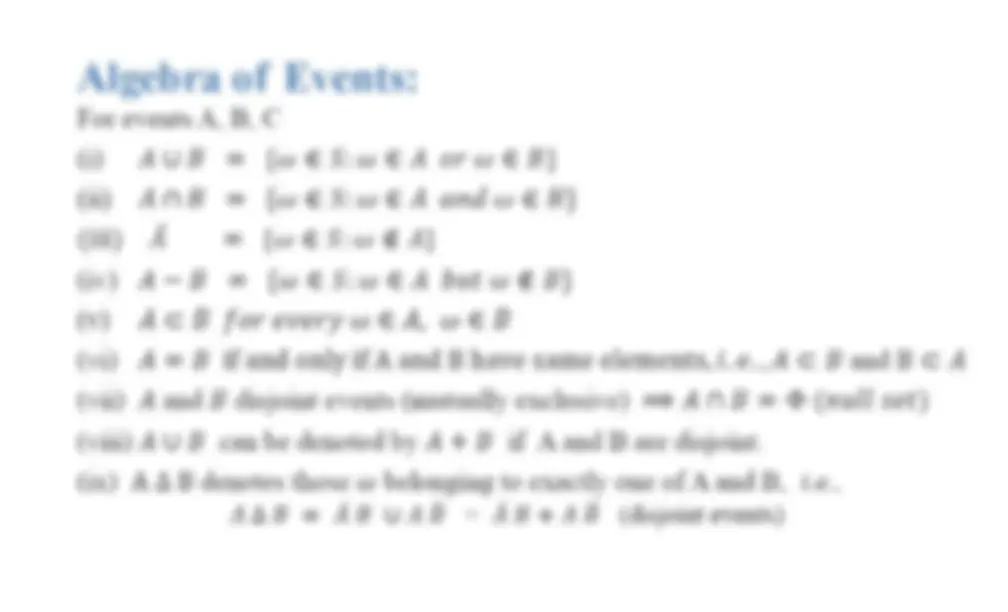
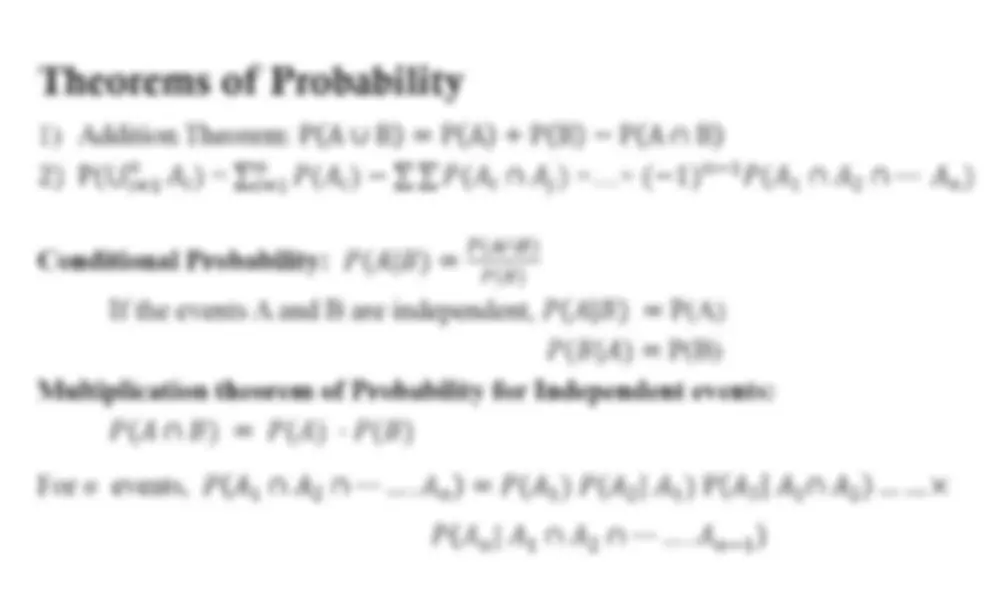
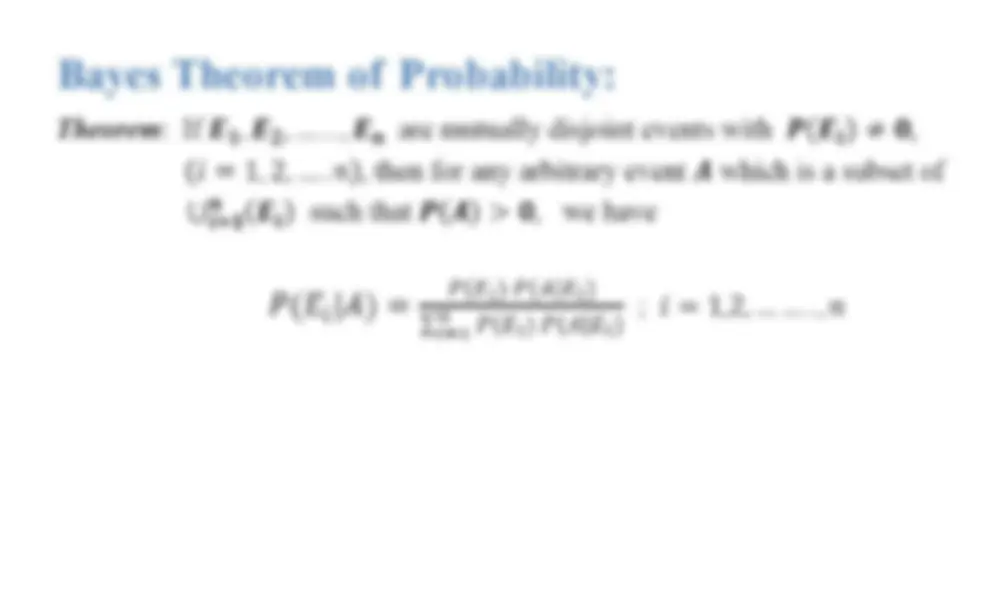
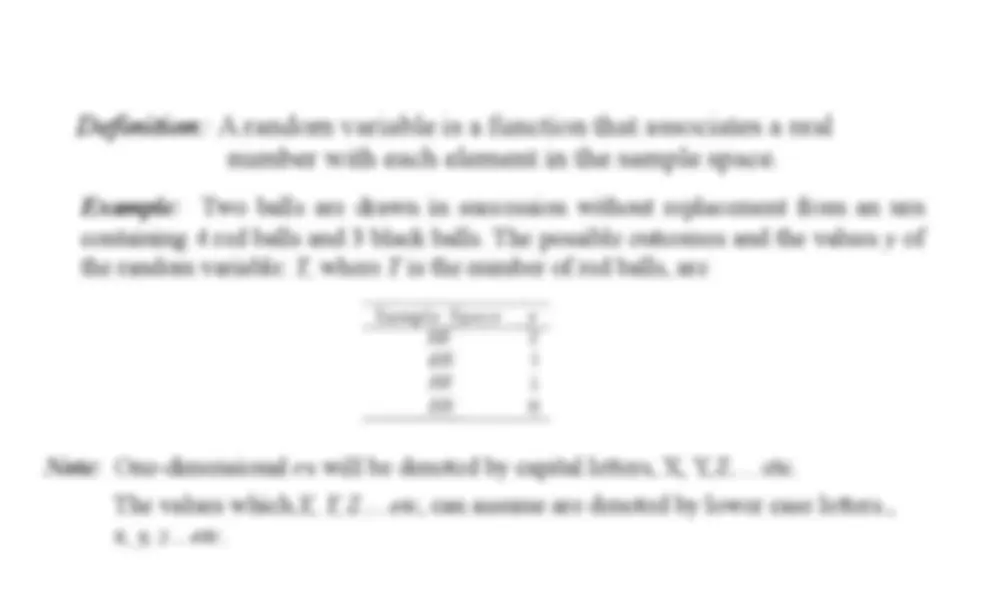
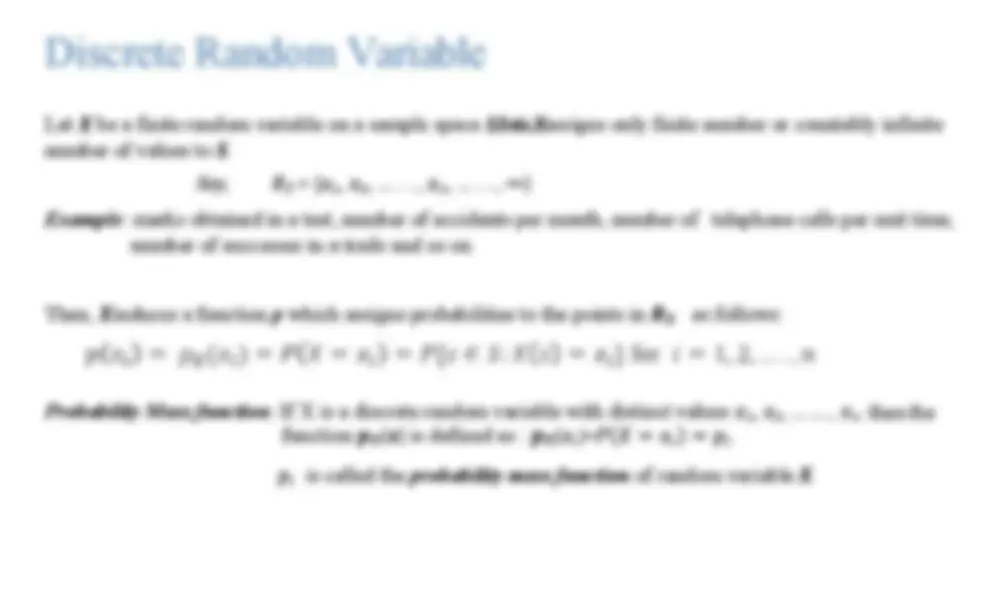
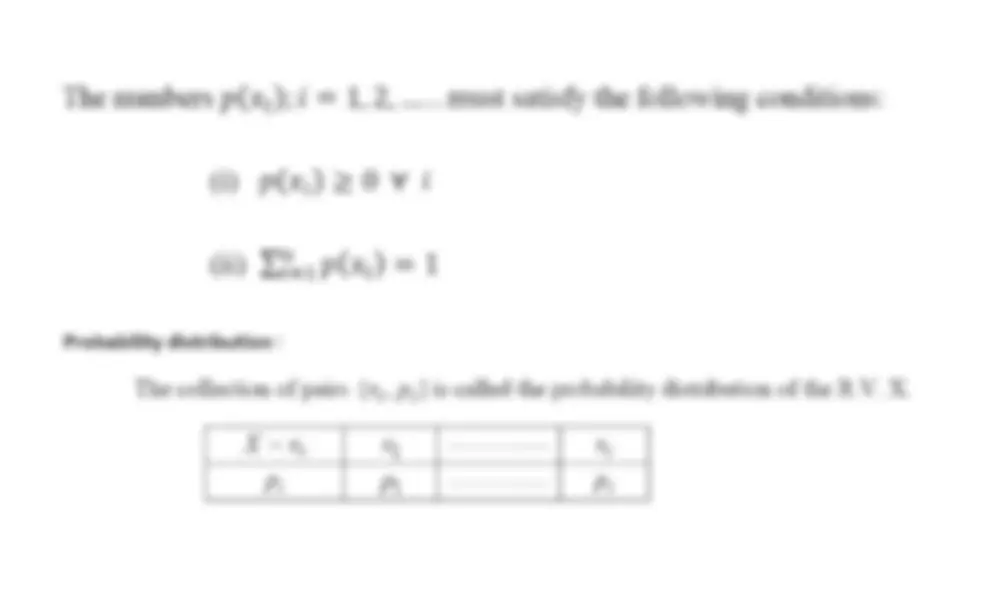

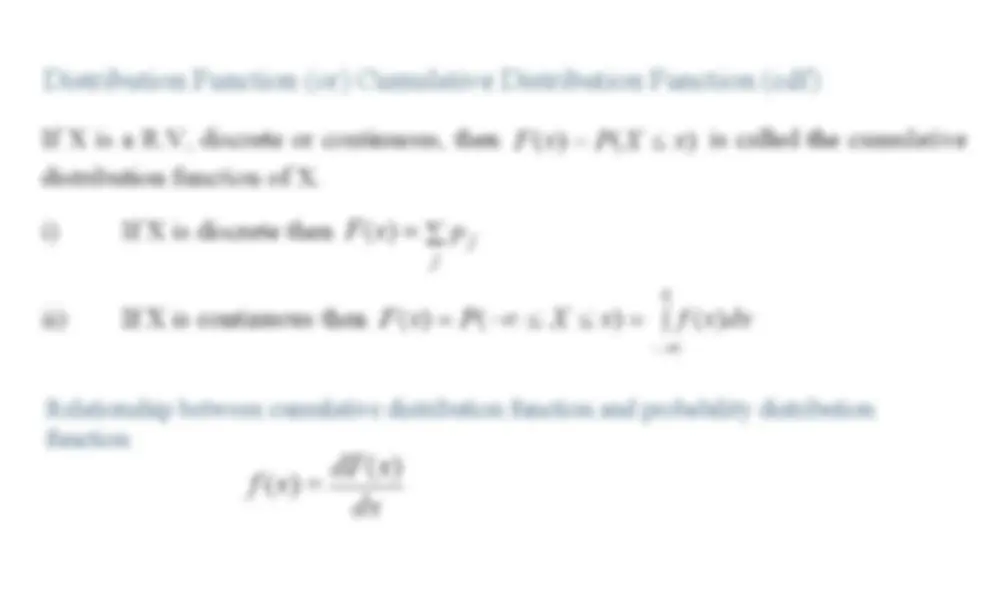
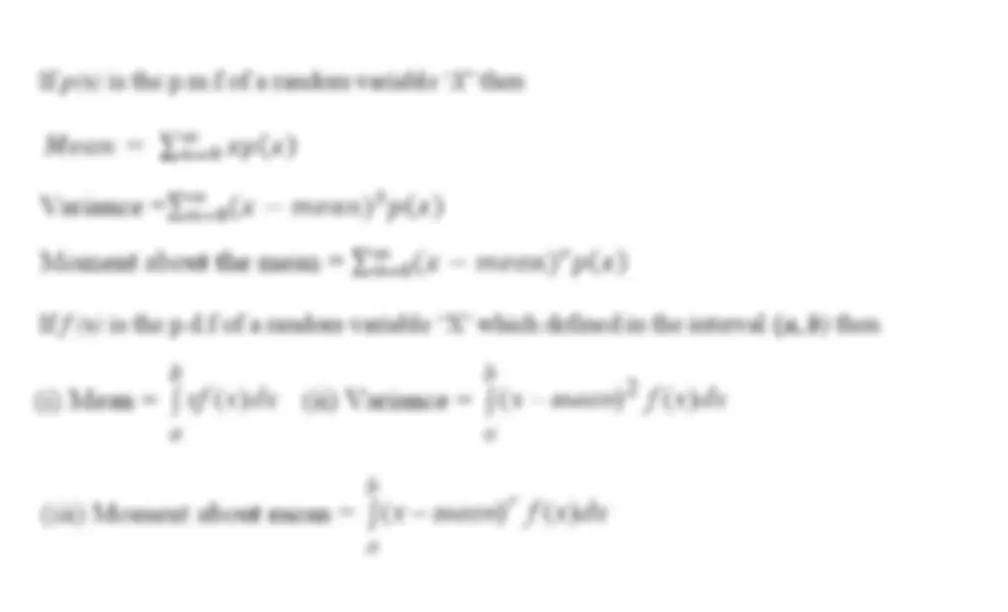
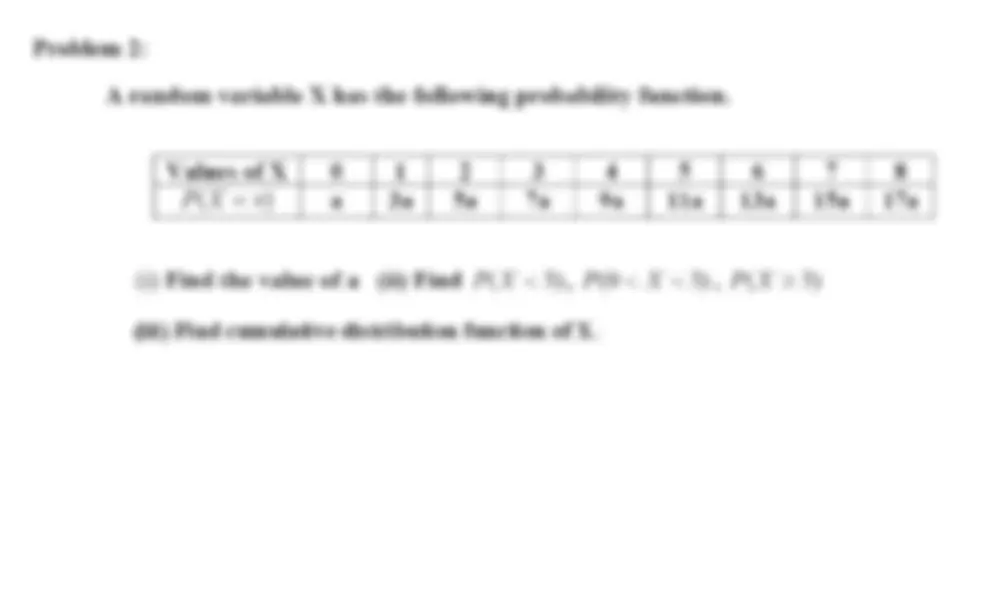
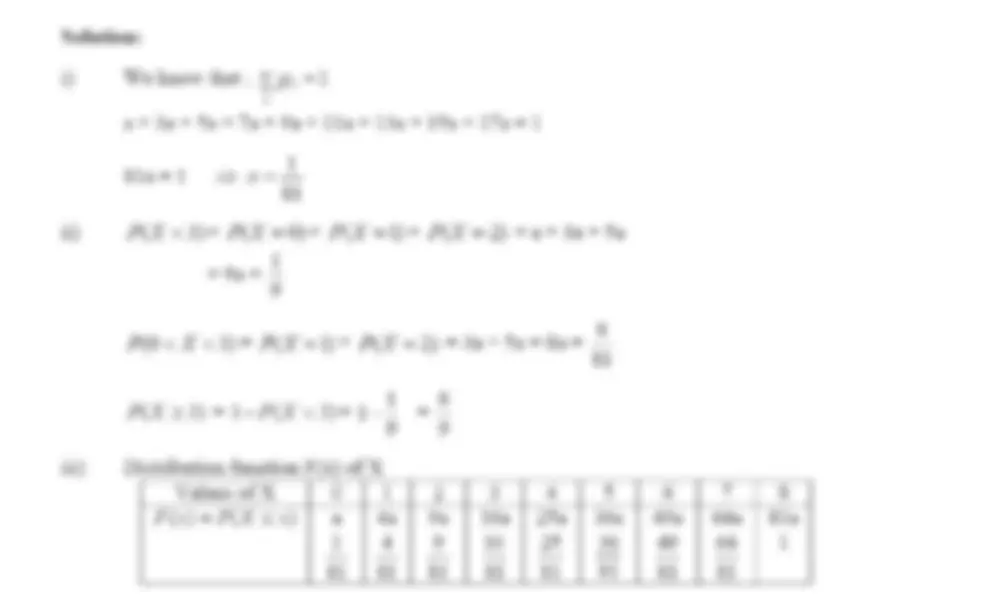
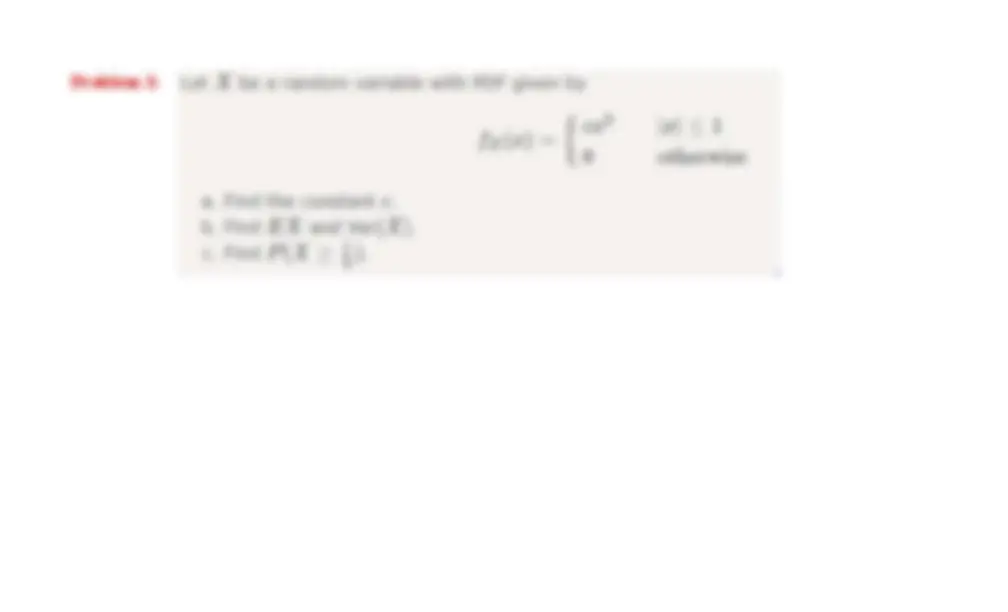
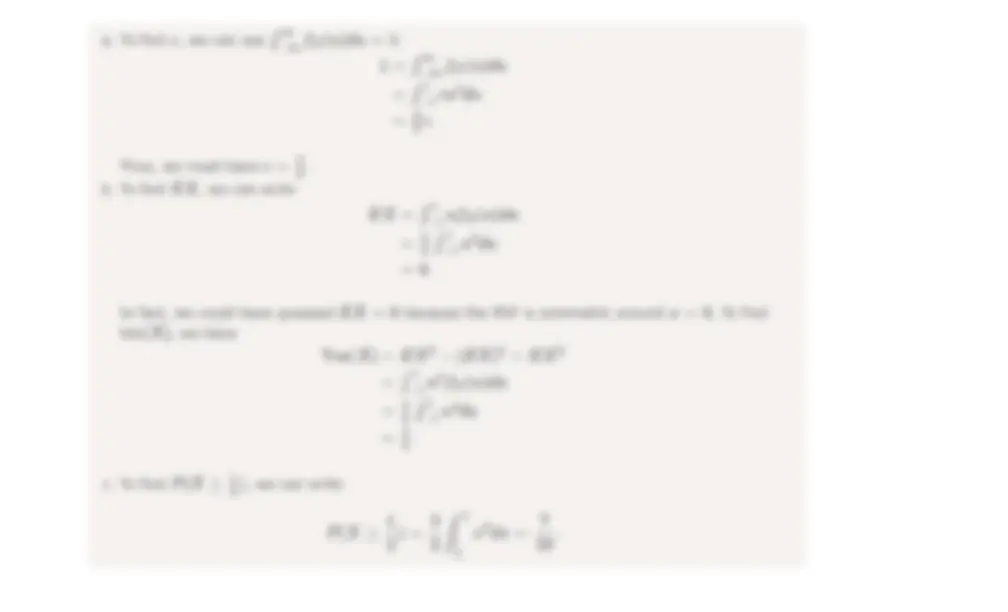
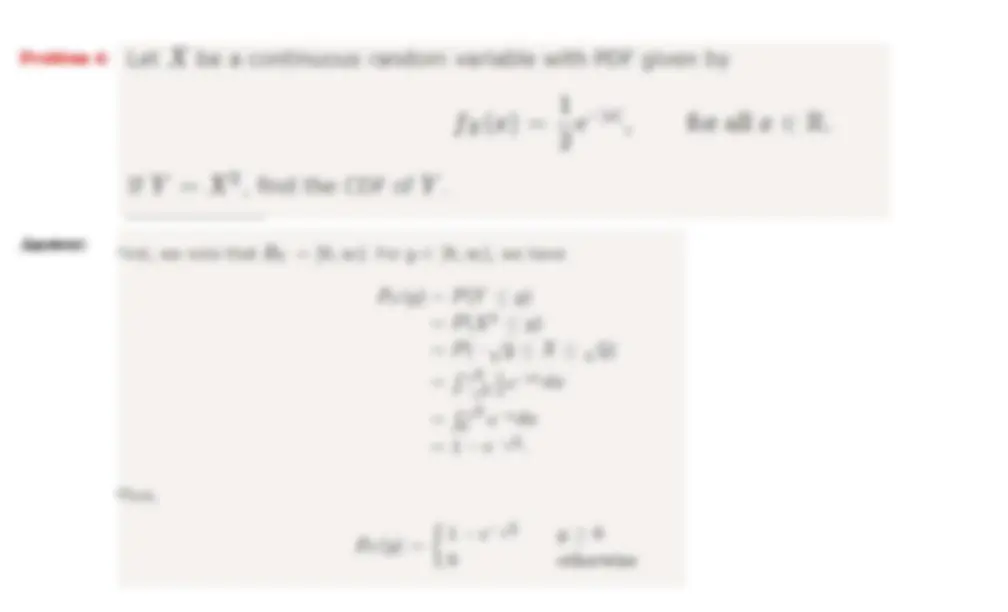
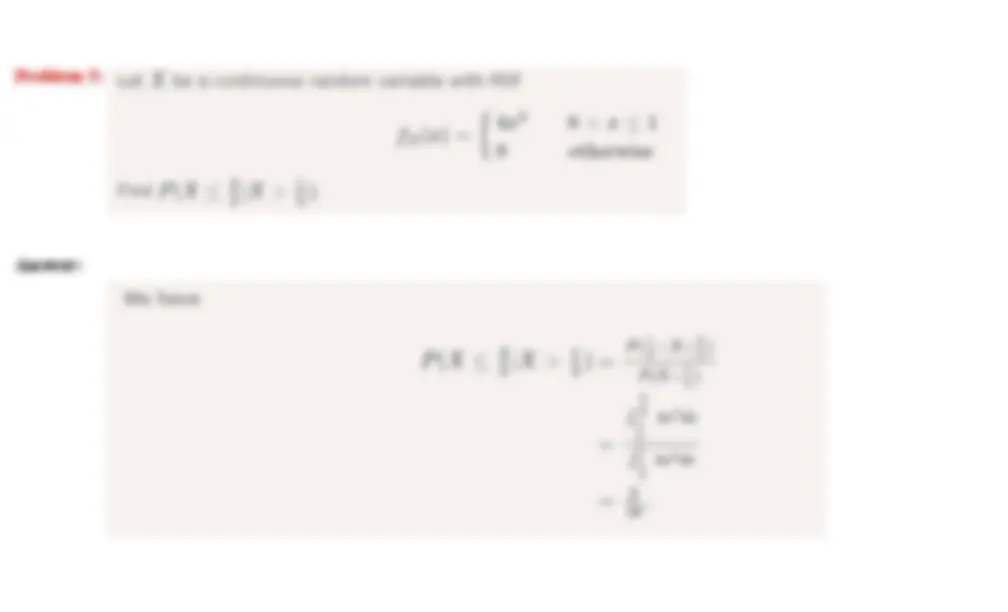
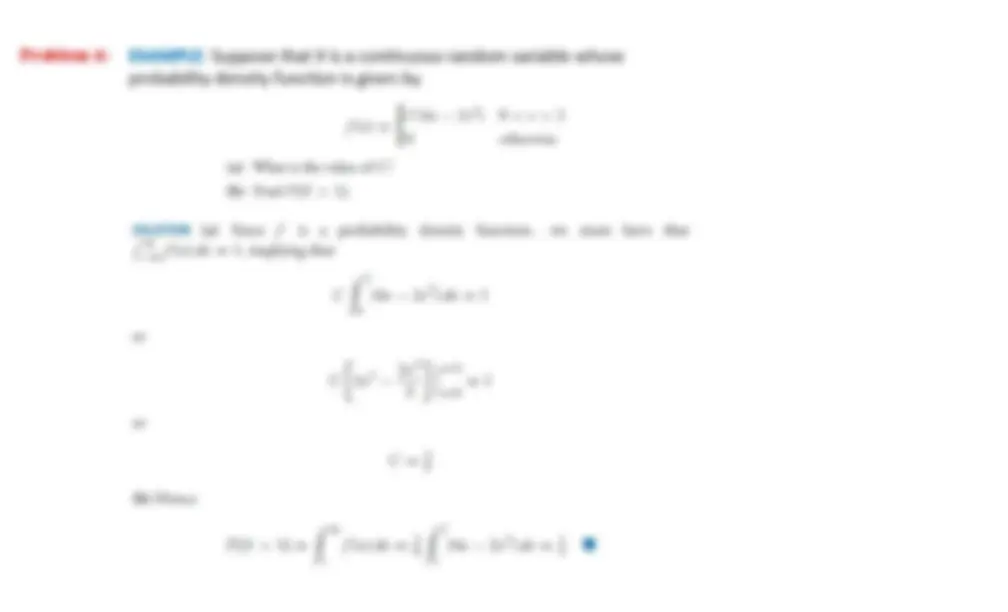
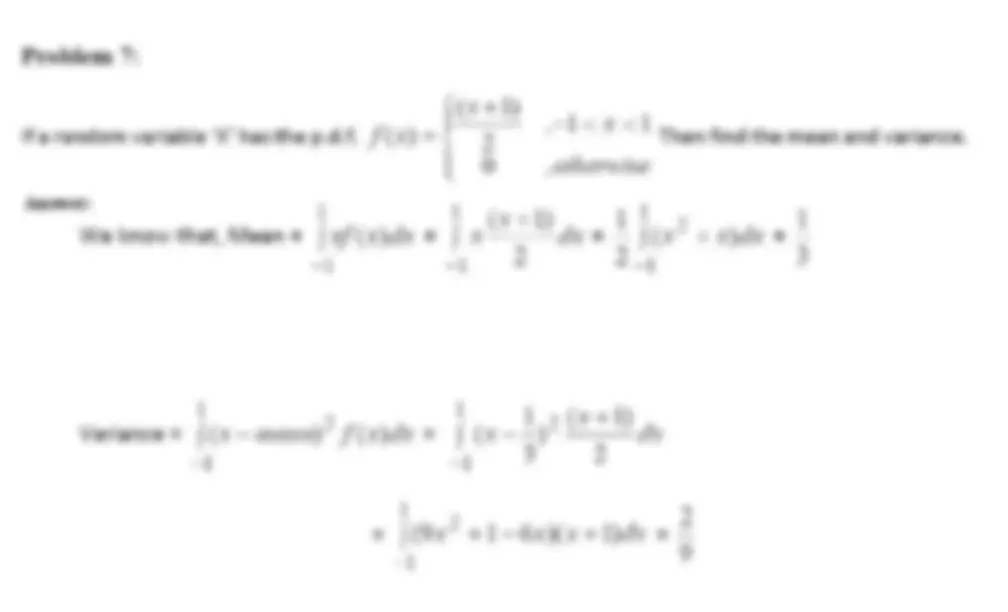


Study with the several resources on Docsity

Earn points by helping other students or get them with a premium plan


Prepare for your exams
Study with the several resources on Docsity

Earn points to download
Earn points by helping other students or get them with a premium plan
Community
Ask the community for help and clear up your study doubts
Discover the best universities in your country according to Docsity users
Free resources
Download our free guides on studying techniques, anxiety management strategies, and thesis advice from Docsity tutors
An introduction to the concept of random experiments and the associated concepts of trials, sample spaces, events, and probabilities. It covers the statistical definition of probability, the algebra of events, and the bayes theorem of probability. The document also introduces the concept of random variables and their relationship to outcomes and probability distributions.
Typology: Lecture notes
1 / 25

This page cannot be seen from the preview
Don't miss anything!


















Random Experiment: A random experiment is a process by which we observe something uncertain. After the experiment, the result of the random experiment is known. An outcome is a result of a random experiment. Example: Throwing a die, a pack of cards. Trial: Any particular performance of a random experiment is called a trial Sample space: The set of all possible outcomes of a statistical experiment is called the sample space. An event is a subset of a sample space. Example: roll a die; sample space: S={1,2,3,4,5,6}. If we would like to know the probability of getting even number, then event is {2,4,6}.
If a random experiment or trail results in ‘ ’ possible outcomes(or cases), out of which ‘ ’ are favourable to the occurrence of an event , then the probability ‘p’ of occurrence of , denoted by ( ), is given by:
(i) Since ≥ 0, ≥ 0 ≤ ≥ 0 ≤ 1 0 ≤ ≤ 1
Let S be the sample space associated with a given random experiment E. A real-valued function defined on S and range is R (−∞, ∞), called a one-dimensional random variable. If the function values are ordered pairs of real numbers (i.e., vectors in two- space), the function is said to be a two-dimensional random variable. More generally, an n-dimensional random variable is simply a function whose domain is S and whose range is a collection of n-tuples of real numbers (vectors in n-space).
Definition: A random variable is a function that associates a real number with each element in the sample space. Note: One-dimensional r.v. will be denoted by capital letters, X, Y, Z….etc. The values which X, Y, Z….etc, can assume are denoted by lower case letters., x, y, z…etc. Example: Two balls are drawn in succession without replacement from an urn containing 4 red balls and 3 black balls. The possible outcomes and the values y of the random variable: Y, where Y is the number of red balls, are
:
Example: Answer:
A random variable X is said to be a continuous random variable if it takes all possible values between certain limits or in an interval which may be finite or infinite. Example: operating time between two failures of a computer Probability density function (p.d.f):
Distribution Function (or) Cumulative Distribution Function (cdf) Relationship between cumulative distribution function and probability distribution function
Problem 1: If the random variable takes the values 1,2,3 and 4 such that 2 P(X = 1) = 3P(X = 2) = P(X = 3) = 5P(X = 4) , find the probability distribution and the cumulative distribution function of X.
Problem 3: